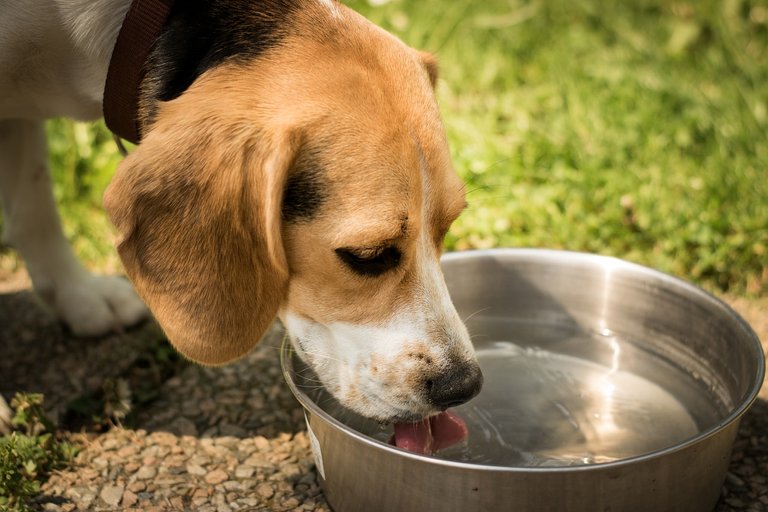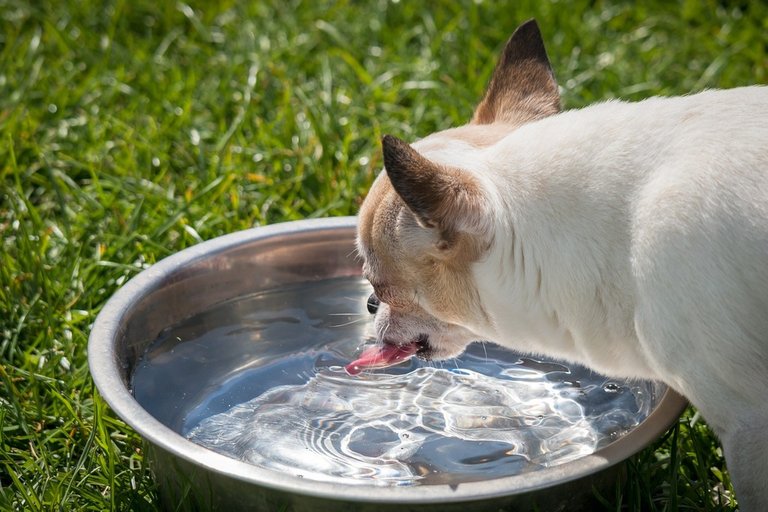How to Handle the Case of Dehydration in Pets.
With the extremely hot weather experienced these days, every human in this part of the world can tell how uncomfortable it feels to experience dehydration in the slightest way possible, but lately, I was thinking about the experience of pets who get dehydrated.
The fact that these lovely pets cannot speak to the demand for water, and it will take careful attention to understand the signs displayed (which lots of pet owners do not give).
Every mammal requires water to make their body function appropriately and certainly, our dogs and cats are no exception to such needs. When we speak of nutrition, our minds will quickly go to the type of food we eat, but water is even more important.
Those who say water is life are very correct because water is highly necessary for every important function in the body, it is with water that digestion is aided, body temperature is regulated, joints get lubricated, and cushioning of internal organs amongst other things.
Dehydration happens in dogs when there is excessive fluid loss, more loss of fluid than the amount taken in.

needpix.com
While going through life's daily activities, it is normal for our pets to lose water through the act of breathing, panting, defecating, urinating, and evaporation through the paws, which the animal compensates for through the act of drinking and eating.
At the end of the day, when the amount of fluid intake does not make up for the amount of fluid lost, it creates a reduction in the flow of blood and a reduction in the volume of fluid.
The effect of dehydration in dogs is very terrible, when it happens it will lead to a reduction in the delivery of oxygen to tissues and organs, it also contributes to electrolyte loss like potassium, sodium, and chloride, which are highly important body minerals. When the situation becomes severe, it contributes also to the failure of the kidney as well as other organs in the body.
The absence of water is what makes our pets dehydrated, so it is crucial to ensure they have access to good water daily, if you have to travel for days, make provision for clean water consistently. Situations like heatstroke, illness, fever, diarrhea, and vomiting may cause a dog to become dehydrated. Some dogs will not drink water until they go through intense exercise or they are encouraged to do so, if you find yourself in such a situation, you will have to constantly encourage your pet to take more water.

source
Having a dehydrated pet at home can be discovered through the display of certain symptoms that can be noticed by pet owners; loss of appetite, excessive panting, dry nose, thick saliva, vomiting, loss of skin elasticity, limited energy level, dry sticky gum, and a dry looking eye.
If your pet is showing symptoms of being dehydrated as mentioned previously, you will need to call your vet instantly, but you can give your pet some water to begin the process of rehydration. Your vet may also provide some fluid through intravenous fluids.
In some cases, your pet may require the replacement of an electrolyte, at the point when the body fails to get sufficient water, fluids that contain electrolytes are drawn out of the cells, creating a form of imbalance that will have a strong effect on their organs.
Do not give your pet so much water at once as it could trigger vomiting, creating even a more complex case of dehydration, that is the reason why it is important to inform your vet who will be able to recommend the required amount of water.
Typically, your dog will need an ounce of water per day depending on body weight, if you are not sure if your dog is taking in sufficient amount of water required for the body weight, then you need to ask your vet to advise you on how to go about it.
The most appropriate way to protect your pet from dehydration is to ensure that does not happen in the first instance, ensure your vet is supplied with a clean amount of water all the time, and even more after an exercise. Bear in mind that, the water consumption levels are not the same for all dogs, and depending on the weather and temperature, your dog may need more water at some point than others.
Take your dog for a constant check-up and ensure that bloodwork and urinalysis are performed once every year on your dog as a form of screening against kidney disease, pancreatitis, diabetes, and other forms of illnesses that could trigger dehydration.
References.
northeast-vet.com/site/pet-care-blog
akc.org/expert-advice/health/warning
petmd.com/dog/symptoms/is-my-dog-dehydrated
Thanks for your contribution to the STEMsocial community. Feel free to join us on discord to get to know the rest of us!
Please consider delegating to the @stemsocial account (85% of the curation rewards are returned).
Thanks for including @stemsocial as a beneficiary, which gives you stronger support.